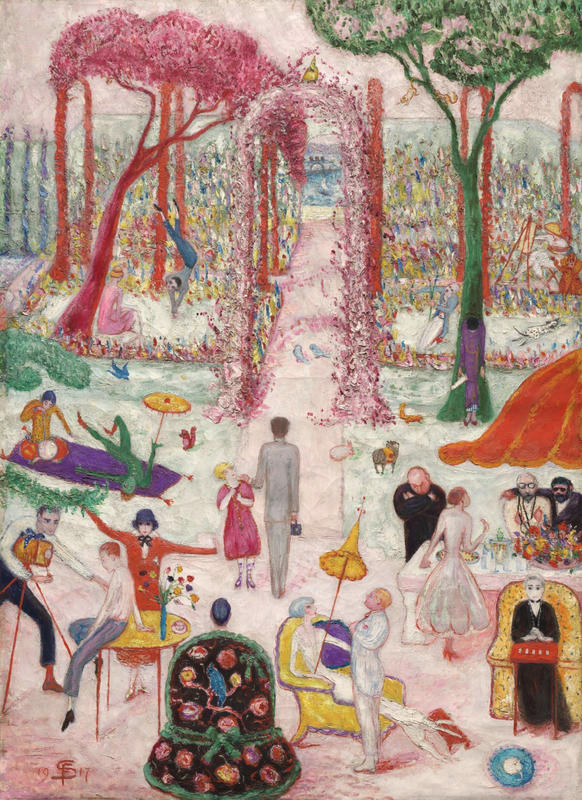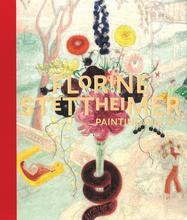Florine Stettheimer was in a league of her own in every possible way, and Sunday Afternoon in the Country shows that she whole-heartedly enjoyed it.
In the summer of 1917, the United States was officially engaged in World War I and the draft was well underway. But for New York City socialites, life was pretty much as it had always been. Florine Stettheimer and her sisters Carrie and Ettie were living with their mother on the Upper West Side of Manhattan. The family had recently relocated from Europe where Stettheimer spent most of her time traveling and studying the work of art history masters like Titian and Diego Velázquez. New York introduced Stettheimer to the avant-garde and she quickly became infatuated with Dadaism and Surrealism. She tried to blend her inspirations from the historical and contemporary eras, but her final product failed to impress the public. During her first solo-exhibition in 1916, Stettheimer’s work was met with mediocre reviews and the artist did not sell a single painting. Stettheimer was so appalled by the response to her exhibition that she swore never to display her artwork publicly again, freeing her from the restraints of society’s judgemental eyes.
From failure came liberation, and without worrying about what others would think of her artwork, Stettheimer blossomed into a satirical and whimsical artist. Sunday Afternoon in the Country is one of Stettheimer’s first works that highlights her newfound style. The composition captures notorious New Yorkers enjoying a lavish garden party at André Brook, the Stettheimer’s country house in Tarrytown, New York. One A-lister, Marcel Duchamp, leans against a table bashfully posing for photographer Edward Steichen. Wearing an eye-catching red coat, Ettie, the youngest Stettheimer sister, watches the pair of artists with enthusiasm. Florine is spending her afternoon away from the commotion and hides amongst the shrubbery working hard at her easel. The Stettheimer matriarch, Rosetta, seems unimpressed by the festivities as she plays a solo-game of cards, dressed in her iconic black gown that she wore on even the most sweltering of days. Directly behind Rosetta sits famous sculptor Jo Davidson, marked by his burly beard and thick head of hair, and who is clearly enjoying the company. The Stettheimers have treated their guests to only the best forms of entertainment, which apparently was a live sitar concert and a tumbling Grinch impersonator.
Speaking of Dr. Seuss, Stettheimer’s whimsical use of color and shape foreshadows the imaginary scenes of The Lorax and Oh, The Places You’ll Go! From pink fluffy trees to bright yellow parasols, Stettheimer creates a pastel world that compliments the eccentric personalities and carefree lifestyle of her guests. But don’t let the girly colors mislead you. Stettheimer was a badass feminist who vocally opposed the patriarchy. From refusing Alfred Stieglitz’s offer of a personal exhibition in his gallery, to avoiding marital commitment, Stettheimer was a free woman who did not care what any man thought of her. We stand behind Stettheimer and all her forward-thinking endeavors, but would really appreciate an invite to the party next time!

















I like this one because Florine Stettheimer has used pink as the main color of this painting. The colors have been used in the painting are bright, so we see the emotion of this painting is happy and positive. Most characters' actions are easy to see, they just chill Sunday afternoon.